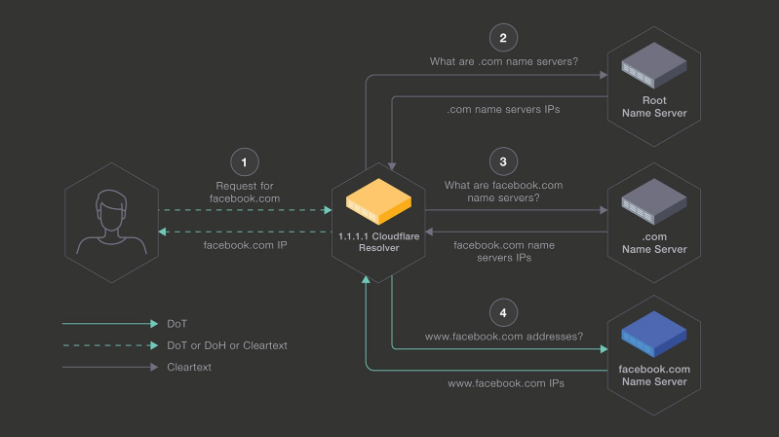Death by a thousand scripts
Verify Your Segmentation is Working with Stealthwatch
Network segmentation…. air gap segmentation… the names go on and on. But no matter what you call it, you designed it and deployed it for a reason. Likely a very good reason. Potentially even a reason with fines and consequences should the segmentation not work. So once you deploy it…. what then? Just trust it is working and will always stay working?
 Trust, But Verify
Trust, But Verify
I admit I am likely viewed as boringly logical when it comes to the network. It just doesn’t seem logical to me to spend so many hours in the design and the deploy phase and then just trust that it is working.
Don’t just trust. Verify.
Use whatever tool you want. Just please… know what is really going on in your network. Know reality.
In this blog I’m going to show you how you can use Stealthwatch to get visibility into what is REALLY going on in your networking in reference to your segmentation.
How can Stealthwatch tell you if your segmentation is working or not? I refer to Stealthwatch as “Your Network Detective Command Center”. If Continue reading
Merry Christmas!
We are now at the 22nd of December, and it is time to take a break to spend time with family and friends (as well as prepping up a lot of work for next year). From my family to yours, we wish you the merriest of Christmas’, and a very happy new year.
Remember, at this time of year, “He who made the blind men see, and the lame men walk,” as Tiny Tim would say.
A bit of retrospect from 2018, and prospect for 2019…
- I posted 295 items (not including worth reading) here on Rule11 in 2018.
- Rule11 had more than 128,000 views in 2018.
- I am shifting roles in the new year; you can expect to see more on this in early January.
- I am planning to move rule11 off WordPress in 2019; I am trying to find a developer to help me do the initial work to move to either Ghost or Craft, but have not had any luck in finding someone to kick start the process.
As Marley might say: “Look to see me no more, and expect the first post in the new year…”
Find Rogue DNS Servers in your Network with Stealthwatch
Rogue DNS kinda reminds of me of a crime scene show I saw once. The killer was hijacking the GPS mapping system in the rental cars of their victims.
Imagine that who you think is your valid DNS server actually isn’t. Yeah… i know – scary. …. If you are not familiar with the term “Rogue DNS” … maybe you might know the exposure via other terms like DNS hijacking or DNS redirection to name just a few.
In this blog I’m not going to teach about what Rogue DNS… DNS hijacking… or DNS redirection. Nor am I going to talk about solutions like OpenDNS (Cisco’s Umbrella). I’m going to just show you how you can use Stealthwatch to get visibility into what is REALLY going on in your network in reference to DNS. We are going to cover 2 situations where having a tool like Stealthwatch could help you with your DNS.
- Finding Rogue DNS
- DNS Server Cutover: Checking Reality before Decommissioning DNS Servers
How does Stealthwatch do this? I refer to Stealthwatch as “Your Network Detective Command Center”. If there are rogue DNS in your network and your end devices are Continue reading
SDxCentral Weekly Wrap: AT&T Launches First Mobile 5G Network
 SDxCentral Weekly Wrap for December 21, 2018: AT&T launches 5G, GE spins off Digital and IoT division, and AWS fires back at Oracle claims.
SDxCentral Weekly Wrap for December 21, 2018: AT&T launches 5G, GE spins off Digital and IoT division, and AWS fires back at Oracle claims.
Athenian Project Turns One: Are Election Websites Safer?


One year ago, Cloudflare launched the Athenian Project to provide free Enterprise-level service to election and voter registration websites run by state and local governments in the United States. Through this project, we have helped over 100 entities in 24 states protect their websites from denial of service attacks, SQL injection, and other malicious efforts aimed at undermining the integrity of their elections. With the end of the year approaching, and the November 6th US midterm elections behind us, we wanted to look back at the project and what we have learned as we move towards 2020.
US Midterm Election Day
The morning of November 6th was full of anticipation for the Athenian Project team with the policy, engineering and support teams ready as polls opened in the East. Early in the day, we were notified by our partner at the CDT that some elections websites were experiencing downtime. Mobilizing to help these groups, we reached out to the website administrators and, through the course of the day, on-boarded over 30 new county-level websites to the Athenian Project and helped them manage the unpredictably large amounts of legitimate traffic.
This last-minute effort would not have been possible without the help Continue reading
Weekly Show 421: Containing Breaches With Illumio’s Microsegmentation (Sponsored)
On today's Weekly Show we dive into microsegmentation with our sponsor, Illumio. We discuss how Illumio builds an app dependency map in the data center to inform security policies, and leverages existing controls on hosts and in networking gear to cordon high-value workloads and contain attacks.
The post Weekly Show 421: Containing Breaches With Illumio’s Microsegmentation (Sponsored) appeared first on Packet Pushers.
5G Competition Is Finally Here (Sort of)
 AT&T's launch of 5G services this week has taken the level of competition and snipping to a glorious new level showing that we are truly now entering the golden age of 5G.
AT&T's launch of 5G services this week has taken the level of competition and snipping to a glorious new level showing that we are truly now entering the golden age of 5G.
IBM Will Use Samsung’s 7nm Tech for Data Center and Cloud Servers
 The news comes as other manufactures including TSMC race to bring their next-gen silicon to market — and challenge Intel’s long-standing chip dominance in the data center.
The news comes as other manufactures including TSMC race to bring their next-gen silicon to market — and challenge Intel’s long-standing chip dominance in the data center.
SDxCentral’s Weekly Roundup — December 21, 2018
 Google Cloud acquires DevOps Research and Assessment (DORA); Telecom Italia (TIM), Qualcomm, and Ericsson successfully complete a live video call using 5G mmWave spectrum; AT&T offers new security service.
Google Cloud acquires DevOps Research and Assessment (DORA); Telecom Italia (TIM), Qualcomm, and Ericsson successfully complete a live video call using 5G mmWave spectrum; AT&T offers new security service.
Facebook’s Mattress Problem with Privacy

If you haven’t had a chance to watch the latest episode of the Gestalt IT Rundown that I do with my co-workers every Wednesday, make sure you check this one out. Because it’s the end of the year it’s customary to do all kinds of fun wrap up stories. This episode focused on what we all thought was the biggest story of the year. For me, it was the way that Facebook completely trashed our privacy. And worse yet, I don’t see a way for this to get resolved any time soon. Because of the difference between assets and liabilities.
Contact The Asset
It’s no secret that Facebook knows a ton about us. We tell it all kinds of things every day we’re logged into the platform. We fill out our user profiles with all kinds of interesting details. We click Like buttons everywhere, including the one for the Gestalt IT Rundown. Facebook then keeps all the data somewhere.
But Facebook is collecting more data than that. They track where our mouse cursors are in the desktop when we’re logged in. They track the amount of time we spend with the mobile app open. They track information in the background. Continue reading
Encrypting DNS end-to-end

Over the past few months, we have been running a pilot with Facebook to test the feasibility of securing the connection between 1.1.1.1 and Facebook’s authoritative name servers. Traditionally, the connection between a resolver and an authoritative name server is unencrypted i.e. over UDP.

In this pilot we tested how an encrypted connection using TLS impacts the end-to-end latency between 1.1.1.1 and Facebook’s authoritative name servers. Even though the initial connection adds some latency, the overhead is amortized over many queries. The resulting DNS latency between 1.1.1.1 and Facebook’s authoritative name servers is on par with the average UDP connections.
To learn more about how the pilot went, and to see more detailed results, check out the complete breakdown over on Code, Facebook's Engineering blog.
Youth@IGF Fellow Story: How Far Are You From the Internet?

Growing up, a family friend will run all the way from her house with a pot of soup hoping to find out something we had at home that could complement the soup she had. On days when my twin sister and I were also missing a part of a meal, she will also return the good deed. Though the distance was not a short one, the thoughts of having a complete meal urged us on.
This neighbor of mine currently studies in Ukraine and none of us has or late had any thoughts of running all the way from Ghana to Ukraine – that will be a new record for the longest run.
The world is currently undergoing a difficult transformation with a rapid migration of almost all manual process to digital and the effect is a massive one both in advantages and disadvantages.
Just like distance resulted in the gap with my friend who now studies many miles away, several reasons have also been identified to be the ones causing the widening digital gap.
Some of the common ones are:
- Access – the ability to actually go online and connect to the Internet (largely relying on the constant supply Continue reading
 Trust, But Verify
Trust, But Verify
